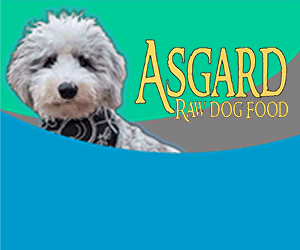Animal caregivers sure do love their four-legged companions. Most of us consider our pets to be members of the family. We play together, eat together, and live our lives together. It is comforting to come home after a rough day to a wagging tail or a gentle purr. Our pets somehow seem to know just what to do to comfort us.
But our beloved animals do not just help us emotionally. Numerous studies in the past three decades show that pets help us physically as well. People who live with cats have a 30 percent reduced risk of suffering a heart attack. Heart attack patients with pets live longer than those without animals. Petting a dog boosts a person’s immune system. Nursing homes that allow pets in the living quarters have reported lower death rates and a drop in the need for medications. Pet owners in general have fewer doctors’ visits and they live longer than those who do not have pets
I have been intrigued by the power of the human-animal bond. Just how do these special creatures affect us so profoundly? My research into this mystery has brought me to the hormone called oxytocin. But before we get to the fun facts, we need a little understanding of the basics.
A hormone is a bodily messenger molecule that is released by one of the many endocrine glands. It travels through the bloodstream to affect distant organs, glands, or tissues. Hormones regulate metabolism, mood, and emotions. Our hormone of special interest, oxytocin, is released by the pituitary gland and has many effects on the individual. First and foremost, oxytocin is a key player in reproduction, which earned it the moniker “the love hormone.” Its release is in part responsible for the pleasurable feeling that sex gives. Oxytocin is also responsible for the uterine contractions during the birthing process as well as milk let down for the newborn.
The psychological effects of oxytocin are incredible. Studies show that this hormone can increase trust and generosity, and decrease stress, anxiety, and fear. But, oxytocin has physical effects as well, which makes sense since the mind and body are part of the same system. Oxytocin has been shown to modulate inflammation and improve wound healing. It can slow the heart beat and breathing, and lower blood pressure.
Oxytocin enhances social bonding. That includes marital partnering, parent-child bonding, and even friendship with others. These others with whom we bond of course include other people, but research shows oxytocin also augments our relationships with animals. Yes, the “love hormone” is a major player in the human-animal bond.
In one study published in Proceedings of the National Academy of Sciences, Japanese researchers sprayed either saline or oxytocin into the noses of dogs. They were then released to their owners who were told to ignore their pets. The study showed that the dogs that were treated with the oxytocin found their owners to be irresistible and were far more likely to stare, sniff, lick and paw at their people than those that got the saline.
We all know that gazing into the eyes of a loved one is part of emotional bonding. Well, a study published in the journal Science showed that gazing behavior from dogs, but not wolves, increased oxytocin in their owners. The people now charged by the oxytocin showed affection toward their dog which increased the animal’s oxytocin. The researchers called this “an interspecies oxytocin-mediated positive loop facilitated and modulated by gazing.” All I can say is, “Let the love and healing flow.”
It is interesting to note that interacting with pets changes our body chemistry in other helpful ways too. Researchers in South Africa found that when people petted and spoke with their dogs, the interaction doubled the people’s level of oxytocin plus boosted their endorphins and dopamine, both neurochemicals that make us feels good. All of these messenger molecules are responsible for our feelings of wellbeing. Another study, this one out of the University of Missouri, found that stroking a dog increases a person’s serotonin level, which is the goal of most antidepressants.
It is no wonder that our animal companions can have a profound healing effect on us. It is fascinating to see research that explains the body chemistry associated with the feelings we have toward our pets. It gives a biological explanation of the healing powers of animals. From my perspective this is interesting but only part of the picture. Why is it that petting or gazing at a beloved animal causes the release of oxytocin and other healing molecules? Could it be that love is the driving force? I believe that the mind, body, and soul are intimately intertwined and the love we feel for others and our animal companions flows freely within us and between us.



